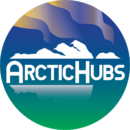Gallery
Up close and personal See life in the Arctic through the lens of our 22 partners and the scientists who are involved within the ArcticHubs project. Explore Arctic science, tourism, mining, fish farming and culture through our galleries of pictures. Researchers in action ArcticHubs at Arctic Spirits Conference in Rovaniemi 2023 ArcticHubs annual partner meeting in Rovaniemi, Finland, September 2021 ArcticHubs annual partner meeting in Egersund, Norway, September 2022 Last …
